 |
 |
|
 |
 |
remnants of giant star explosions, extragalactic SN
Visit also our mobile website
Supernovae in other galaxies
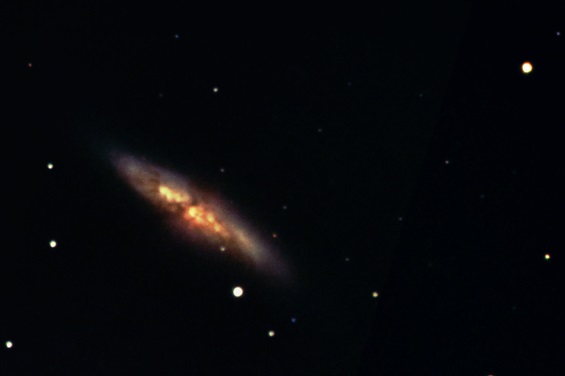 Cigar Galaxy M 82, about 13 million lightyears away without Supernova in 2013.
Astro photo taken with Celestron C 14.
Astrophoto C14
Cigar Galaxy M 82, about 13 million lightyears away without Supernova in 2013.
Astro photo taken with Celestron C 14.
Astrophoto C14
 Cigar Galaxy M 82, about 13 million lightyears away with Supernova in Feb 2014.
Astro photo taken with Celestron C 14, 4m focal length , 35,6cm Aperture and canon.
Astrophoto C14
Cigar Galaxy M 82, about 13 million lightyears away with Supernova in Feb 2014.
Astro photo taken with Celestron C 14, 4m focal length , 35,6cm Aperture and canon.
Astrophoto C14
 Galaxy M82 with Supernova in Feb 2014 and one year later in Feb 2015
Astrophoto C14
Galaxy M82 with Supernova in Feb 2014 and one year later in Feb 2015
Astrophoto C14
 The supernova 2014 in M 82 taken on March 20th, i.e. one month after the photo above. It is still visible but a lot fainter.
The supernova 2014 in M 82 taken on March 20th, i.e. one month after the photo above. It is still visible but a lot fainter.
 Galaxies M81 and M82. The supernova can still be seen on this astro photo taken on May 8th close to Vienna using a Celestron Comet Catcher on Astrotrac mount and Canon.I am really surprised about the quality of this photo taken without autoguider with this light travel mount and this extra fast scope!
Galaxies M81 and M82. The supernova can still be seen on this astro photo taken on May 8th close to Vienna using a Celestron Comet Catcher on Astrotrac mount and Canon.I am really surprised about the quality of this photo taken without autoguider with this light travel mount and this extra fast scope!
 Supernova in M 82 taken on July 25th 2014 with 80/480 Triplet APO. Its much fainter but still to be seen.
Supernova in M 82 taken on July 25th 2014 with 80/480 Triplet APO. Its much fainter but still to be seen.
 Supernova in another galaxy. Whereas supernovas to be observed in our own galaxy are very rare(last time 1054-see Crab Nebula above), such events can be more often observed in the vast number of other galaxies around us. In March 2012 for example I could observe a supernova in the galaxy M95, 35 million lightyears away(indicated by the arrow).
Feel and Imagine the immense power and brightness of a supernova!! A supernova exploding only a couple of 1000 lightyears away from us in our galaxy would be seen even during daytime(!!!) and end in a nebula like the Crab Nebula in the pic above or the Cirrus nebulae(pics below)
See also section galaxies
Astro photo taken using Zeiss 300mm tele lens with Canon at Emberger Alm, Carinthia. You can see the supernova even using shorter focal lenght!!
Supernova in another galaxy. Whereas supernovas to be observed in our own galaxy are very rare(last time 1054-see Crab Nebula above), such events can be more often observed in the vast number of other galaxies around us. In March 2012 for example I could observe a supernova in the galaxy M95, 35 million lightyears away(indicated by the arrow).
Feel and Imagine the immense power and brightness of a supernova!! A supernova exploding only a couple of 1000 lightyears away from us in our galaxy would be seen even during daytime(!!!) and end in a nebula like the Crab Nebula in the pic above or the Cirrus nebulae(pics below)
See also section galaxies
Astro photo taken using Zeiss 300mm tele lens with Canon at Emberger Alm, Carinthia. You can see the supernova even using shorter focal lenght!!
 Galaxies M95 with supernova(SN) and M96.
magnified detail of the astro photo above taken with 300mm Zeiss tele lens as a negative
Galaxies M95 with supernova(SN) and M96.
magnified detail of the astro photo above taken with 300mm Zeiss tele lens as a negative
 Galaxies M96(left) and M95 without supernova taken in March 2014 at Emberger Alm, Carinthia, Austria using 8inch f4 Newton.
Galaxies M96(left) and M95 without supernova taken in March 2014 at Emberger Alm, Carinthia, Austria using 8inch f4 Newton.
 Galaxy M 95 with supernova in April 2012.
The supernova although being 35 million lightyears away in the galaxy M95, is shining as bright as many stars on this photo which all belong to our Milky Way and are only several thousand lightyears away!!
Astro photo taken with 10inch Schmidt Newton close to Vienna, Austria
Galaxy M 95 with supernova in April 2012.
The supernova although being 35 million lightyears away in the galaxy M95, is shining as bright as many stars on this photo which all belong to our Milky Way and are only several thousand lightyears away!!
Astro photo taken with 10inch Schmidt Newton close to Vienna, Austria
 strongly magnified and color processed detail of the photo above
Galaxy M95 with supernova in April 2012. The supernova is located in the left outer spiral arms of this barred spiral galaxy only to be seen as shade due to limitations of instrument and sky quality.
The other stars you see on the pic all belong to our own Milky Way and are in the vicinity of our sun brightness mag 9 to 15 and max a couple of 1000 lightyears away whereas the supernova is mag 9,7 and belongs to a galaxy about 35million lightyears away!!! Feel and Imagine the immense power and brightness of a supernova!! A supernova exploding only a couple of 1000 lightyears away from us in our galaxy would be seen even during daytime(!!!)
strongly magnified and color processed detail of the photo above
Galaxy M95 with supernova in April 2012. The supernova is located in the left outer spiral arms of this barred spiral galaxy only to be seen as shade due to limitations of instrument and sky quality.
The other stars you see on the pic all belong to our own Milky Way and are in the vicinity of our sun brightness mag 9 to 15 and max a couple of 1000 lightyears away whereas the supernova is mag 9,7 and belongs to a galaxy about 35million lightyears away!!! Feel and Imagine the immense power and brightness of a supernova!! A supernova exploding only a couple of 1000 lightyears away from us in our galaxy would be seen even during daytime(!!!)
 The galaxy M95 taken in January 2014- The supernova left of the center had burned its fuel, produced rare heavy elements, imploded to a neutron star and disappeared
Astrophoto C14
The galaxy M95 taken in January 2014- The supernova left of the center had burned its fuel, produced rare heavy elements, imploded to a neutron star and disappeared
Astrophoto C14
Supernovae remnants in our Milky Way
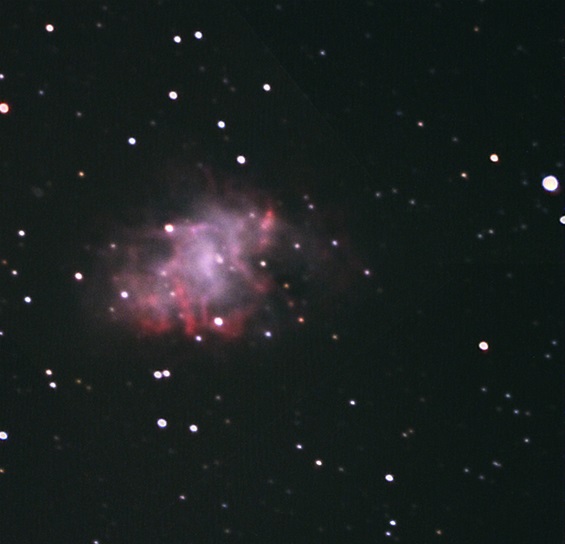 The Crab Nebula M1 in Taurus located on the Perseus spiral arm of our Milky Way, 7000 light years away, diameter is about 12 lightyears
See the fine structures of this remnant of a supernova explosion.
A giant star died here and the explosion was observed by Chinese astronomers and Native Americans (Arizona and Mexico) in 1054 AC.
It was 4times brighter than Venus and for 23days visible even during daytime!!
Other than in case of a planetary nebula, the rare giant stars which are ending in a supernova do not compress to a white dwarf star but implode to an extremely dens neutron star or even a black hole. All the heavier elements are created only under the extreme conditions of a supernova explosion and are in all of us and around us. Also no gold without supernovae
Astro photo taken with a Celestron C 14 using OIII and H alpha filters, 30km east of Vienna, Austria
Astrophoto C14
The Crab Nebula M1 in Taurus located on the Perseus spiral arm of our Milky Way, 7000 light years away, diameter is about 12 lightyears
See the fine structures of this remnant of a supernova explosion.
A giant star died here and the explosion was observed by Chinese astronomers and Native Americans (Arizona and Mexico) in 1054 AC.
It was 4times brighter than Venus and for 23days visible even during daytime!!
Other than in case of a planetary nebula, the rare giant stars which are ending in a supernova do not compress to a white dwarf star but implode to an extremely dens neutron star or even a black hole. All the heavier elements are created only under the extreme conditions of a supernova explosion and are in all of us and around us. Also no gold without supernovae
Astro photo taken with a Celestron C 14 using OIII and H alpha filters, 30km east of Vienna, Austria
Astrophoto C14
 Crab Nebula M1 astro photo taken with Celestron C14 and Orion Starshoot Pro Color CCD Camera
3x200 sec and 3x300 sec at 2x2 mono
3x600ec and 2x800 sec at 1x1 color
Crab Nebula M1 astro photo taken with Celestron C14 and Orion Starshoot Pro Color CCD Camera
3x200 sec and 3x300 sec at 2x2 mono
3x600ec and 2x800 sec at 1x1 color
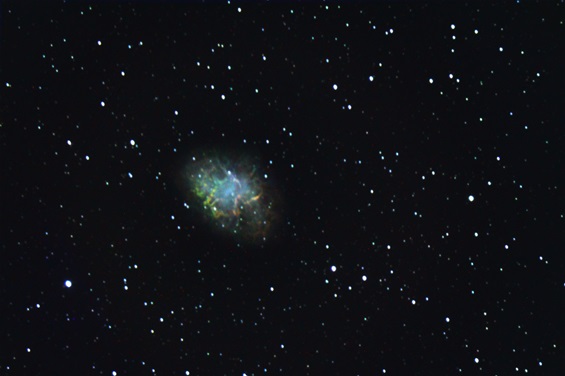 Crab Nebula M1 taken with Celestron C14 and Canon EOS 450d modified in Hubble Colors.
Luminance: 3x5min CLS
Halpha, OIII and SII; 1exp 15 min each
Crab Nebula M1 taken with Celestron C14 and Canon EOS 450d modified in Hubble Colors.
Luminance: 3x5min CLS
Halpha, OIII and SII; 1exp 15 min each
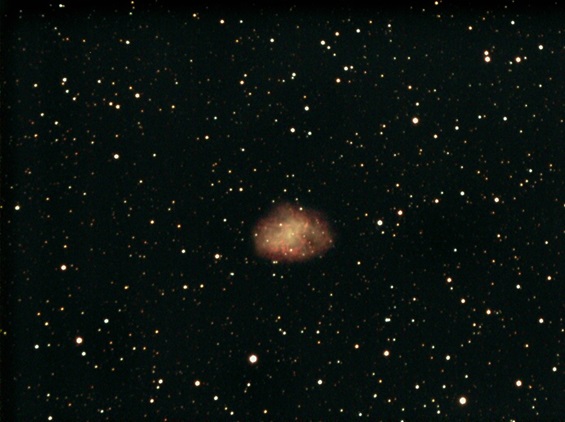 Crab Nebula M 1 astro photo taken with APM APO 107/700 on EQ 5 mount 211x10sec Atik Infinity
Crab Nebula M 1 astro photo taken with APM APO 107/700 on EQ 5 mount 211x10sec Atik Infinity
 Cirrus or Veil nebula eastern part NGC 6992, remnant from a super nova explosion long ago about 2000 lightyears away
Astro photo taken with 8 inch newton telescope with coma corrector reducer, 73cm effective focal length and canon 30 km off Vienna , Austria
Better aperture and details but sky not as good as in the pic above
Cirrus or Veil nebula eastern part NGC 6992, remnant from a super nova explosion long ago about 2000 lightyears away
Astro photo taken with 8 inch newton telescope with coma corrector reducer, 73cm effective focal length and canon 30 km off Vienna , Austria
Better aperture and details but sky not as good as in the pic above
 Cirrus or Veil nebula western part NGC 6960, remnant from a super nova explosion which happened long ago about 2000 lightyears away from earth.
astro photo taken with Zeiss 1:4, 300mm tele lens and Canon on Emberger Alm, Carinthia, Austria
Cirrus or Veil nebula western part NGC 6960, remnant from a super nova explosion which happened long ago about 2000 lightyears away from earth.
astro photo taken with Zeiss 1:4, 300mm tele lens and Canon on Emberger Alm, Carinthia, Austria
 Veil nebula eastern part NGC 6960
Astro photo taken with 80/480 triplet at Schrick, Wine Quarter(Weinviertel), Lower Austria.
look at the fine blue oxygen nebula structures
Astrophoto C14
Veil nebula eastern part NGC 6960
Astro photo taken with 80/480 triplet at Schrick, Wine Quarter(Weinviertel), Lower Austria.
look at the fine blue oxygen nebula structures
Astrophoto C14
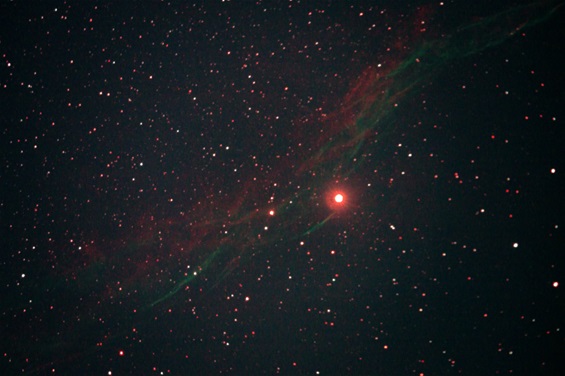 Cirrus or Veil nebula western part NGC 6960.
Astro photo taken with a Celestron C I 14 using a focal reducer andUHC filter, 30km east of Vienna, Austria.
Astrophoto C14
Cirrus or Veil nebula western part NGC 6960.
Astro photo taken with a Celestron C I 14 using a focal reducer andUHC filter, 30km east of Vienna, Austria.
Astrophoto C14
 Western Veil Nebula NGC 6960 taken with APM APO 107/700 using a 0,79 reducer and Canon EOS 550d mod.
stack of 4 exp a 430sec ISO 1600
Western Veil Nebula NGC 6960 taken with APM APO 107/700 using a 0,79 reducer and Canon EOS 550d mod.
stack of 4 exp a 430sec ISO 1600
 Cirrus or Veil nebula eastern part NGC 6992, remnant from a super nova explosion long ago about 2000 lightyears away
astro photo taken with Zeiss 1:4, 300mm tele lens and Canon on Emberger Alm, Carinthia, Austria
Cirrus or Veil nebula eastern part NGC 6992, remnant from a super nova explosion long ago about 2000 lightyears away
astro photo taken with Zeiss 1:4, 300mm tele lens and Canon on Emberger Alm, Carinthia, Austria
 Veil nebula(description see next pic) NGC 6992
Astro photo taken with Skywatcher Newton 0,6m focal length and 13cm aperture on EQ3 mount guided by MGEN on the south coast of Crete Greece
Veil nebula(description see next pic) NGC 6992
Astro photo taken with Skywatcher Newton 0,6m focal length and 13cm aperture on EQ3 mount guided by MGEN on the south coast of Crete Greece
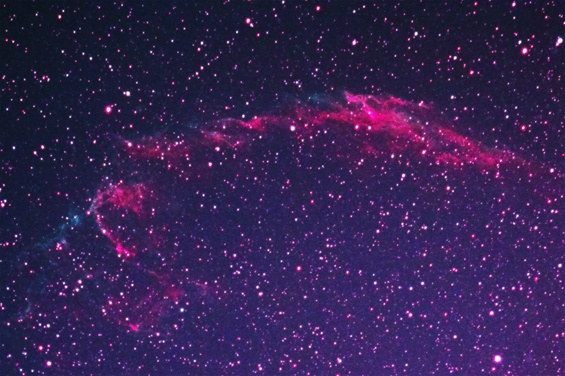 Veil nebula Eastern part
astro photo taken with 80/480 APO on EQ 5 mount MGEM guided, using UHC filter at nearly full moon close to Vienna
magnified detail
Veil nebula Eastern part
astro photo taken with 80/480 APO on EQ 5 mount MGEM guided, using UHC filter at nearly full moon close to Vienna
magnified detail
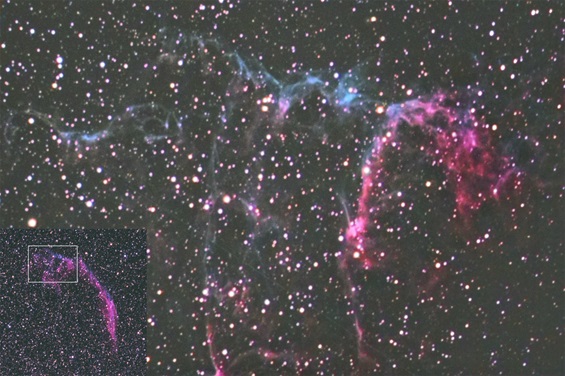 Detail of the Western Part of the veil nebula.
Astro photo taken with Celestron C14 using a focal reducer at f7 F2500mm
Luminance Canon EOS 450d Monochrome 3x 10 min at ISO 1600 with CLS filter
RGB: Astro photo above taken with 8inch Newton
Detail of the Western Part of the veil nebula.
Astro photo taken with Celestron C14 using a focal reducer at f7 F2500mm
Luminance Canon EOS 450d Monochrome 3x 10 min at ISO 1600 with CLS filter
RGB: Astro photo above taken with 8inch Newton
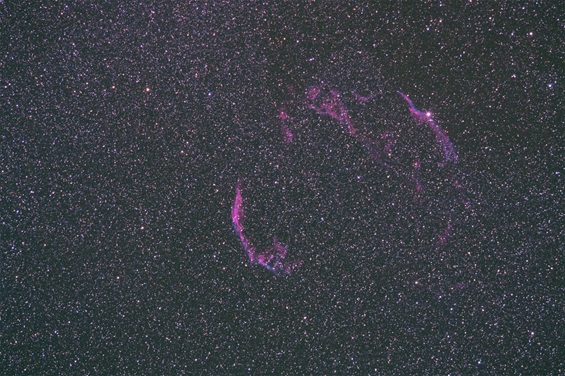 Veil Nebula taken at Hohe Dirn mountain in Upper Austria at 1200m above sea level with Canon 2,8 200 mm L lens and Canon EOS 40d modified.
The Veil nebula is a supernova remnant about 2000LY away, diameter 100LY.
Veil Nebula taken at Hohe Dirn mountain in Upper Austria at 1200m above sea level with Canon 2,8 200 mm L lens and Canon EOS 40d modified.
The Veil nebula is a supernova remnant about 2000LY away, diameter 100LY.
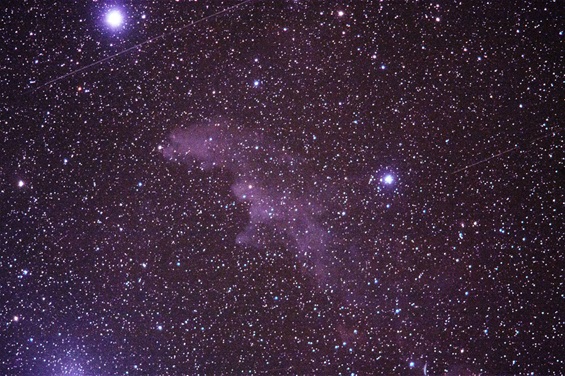 Witch Head nebula in Eridanus next to Orion, 900 light years away
This extremely faint reflection nebula is illuminated by near Rigel, a blue super giant star of the Orion constellation and believed to be an ancient supernova remnant
Astro photo taken at Death Valley with Canon 200mm L lens
Witch Head nebula in Eridanus next to Orion, 900 light years away
This extremely faint reflection nebula is illuminated by near Rigel, a blue super giant star of the Orion constellation and believed to be an ancient supernova remnant
Astro photo taken at Death Valley with Canon 200mm L lens
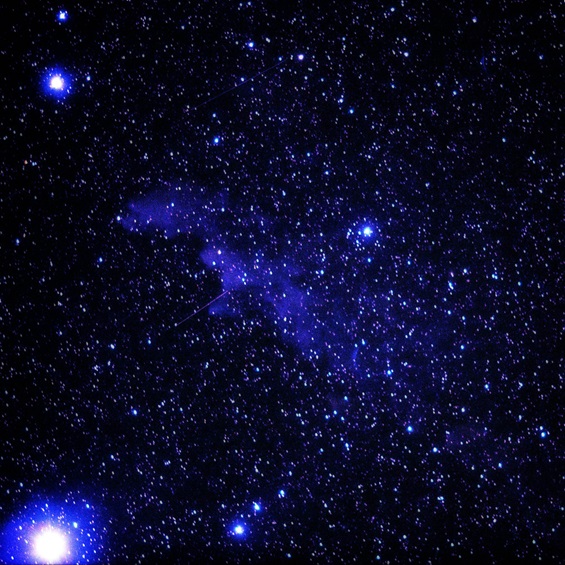 Witch head nebula in blue light
you can see the star Rigel,which is illuminating the Super Nova remnant in the bottom left.
Astro photo taken with Canon 200mm L lens and Canon in Death Valley, California
Witch head nebula in blue light
you can see the star Rigel,which is illuminating the Super Nova remnant in the bottom left.
Astro photo taken with Canon 200mm L lens and Canon in Death Valley, California
|
|
 |
|
|
|